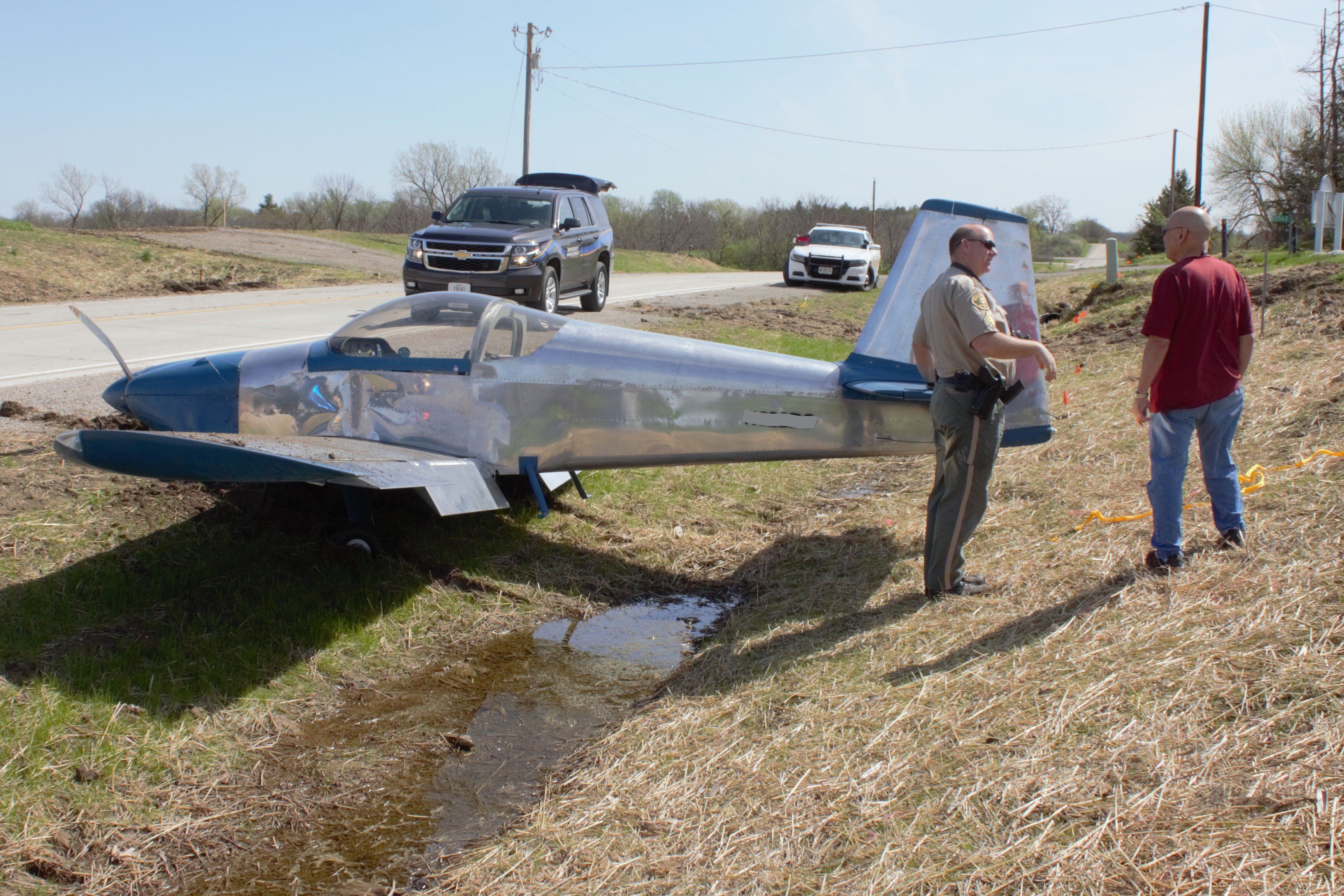Iowa … you know, fly-over country, as in Minnesota pilots fly over us on their way to Sun ‘n Fun, and Sou’westerners cross when heading to Oshkosh. Unless you’re running for president—and who isn’t?—it’s perceived that there’s little reason to land in Iowa. But skip us at the risk of losing New Hampshire and, more importantly, missing runway mud boggin’!
Mud boggin’ is a real motor sport in, well, anywhere that NPR doesn’t reach and is the strangest event I’ve ever entered. It’s not complicated—two pits are bulldozed into the water table at the county fairgrounds. Then, at the signal from a Duane, 4×4 trucks plunge into the muddy abysses, race to the back wall, slide through a glop-floppin’ one-eighty and return to see who emerges with dignity intact. It’s second only to paintball in silliness. Aviation offers its own version for those willing to fly off the grid.
For the record, we do have paved runways in Iowa, several in fact. But I prefer grass, particularly on warm days in a 1946 Aeronca, while chanting my mantra: I fly, but not to actually get anywhere. Turf makes for good landings or at least masks the crosswind-challenged pilot’s inability to keep the nose pointed where a centerline would be. Tires never squeal under sideloads. Buckle, perhaps, but you can always blame that on mythical dust devils.

It’s all about aesthetics. Rare is the pilot who swoons over the heady bouquet of asphalt on a midsummer’s noon. A grass runway, by contrast, is sweet fantasy. Green-stained tailwheels imply adventure above the ordinary. But grass does have drawbacks. It takes hours to mow an airfield, and except in drought conditions, it doesn’t stay mowed. Ground squirrels bore tunnels, coaxing badgers to root out the squinnies for brunch, leaving holes that can flip a Cub. And when the grass is damp, braking action is bupkis.
Between snow melt and verdant summer, Iowa sod turns to mud. And we’re talking Passchendaele trench warfare muck here, the kind not easily brushed off your wheel pants but, instead, sticks with malicious tenacity. Caked on landing gear—conventional or tricycle—it mocks the short-field technique I demonstrated on dry Hawaiian pavement during my private pilot checkride. Not until years later, when about to take another hard runway for my commercial ride, did I get a sense of real soft field performance when the examiner simulated a muddy runway takeoff by working the throttle himself.
Normally, I’d add full power and dutifully haul back on the yoke, without smacking the tail, to pop free of the imaginary goo and stagger into ground effect. Easy. Except with the examiner adding only partial power, the otherwise unremarkable Beech Sierra skipped along at Vmush as though impeded by a genuinely soft field. After making his point, he transferred power to me, and off we flew, so I could demonstrate how much I didn’t understand about eights on pylons. Thirty years later, I use the same soft-field technique on students about to face the checkride-versus-reality conundrum.
A checkride is a brief, albeit intense, bit of theater in which the actors (applicants) perform FAA dance steps for a critical audience of one. A good examiner takes this brief relationship to both evaluate and educate with, “Yeah, but …” As in, “Yeah, you passed, but let me lay 40 years of experience on you before you fly away to form your own misconceptions.”
In a perfect world, a checkride would involve the usual ACS kabuki, but once the show’s over, the examiner and the new pilot should fly an old, mud-boggin’ airplane to an unpaved airfield for the real stuff. In dry season, perhaps a water wagon could pre-soak the runway to stage what it’s like to plant your wheels on real earth after a thunderstorm. Frankly, there’s little that’s more beautiful.
Grass runways shimmer after a rain. They’re usually fairly short, so combining short and soft-field technique is routine. Just clear the trees and don’t land short of the threshold, or you’ll rip off the gear legs. Landing long has similar deleterious effects. (See photo.) Any hesitation while turning around after touchdown allows the spongey ground to cradle your wheels in cement shoes, necessitating local pilots to slog to the rescue with, “Got us another city mud bogger, Duane …”
But when it goes right it’s glorious … in an Iowa kinda way. Takeoff runs are long, splashing through puddles that yaw the airplane left and right. Not good with rudders? You’ll learn fast or else. If ground effect has been a vaguely understood principle, its academic benefits merely to be parroted on checkrides, then you’ll learn to embrace the magic or fail spectacularly.
Don’t be discouraged if the airplane simply doesn’t break free of the mud three-quarters of the way down the runway. If the wind is calm, turn around at the end, without stopping, and add full power to attempt a run in the opposite direction. Repeat as necessary, until your wings are thoroughly splattered with slime and no longer support lift. Find a hose.
Sure, landing on a grass runway in mud boggin’ season involves risk, but so does overflying Iowa or any rural strips that might not be in ForeFlight. By not visiting, you risk squandering the chance to slide through aviation’s primordial ooze and, with the side window open, simulate that open-cockpit thrill of wind and mud in your hair—how aviation was meant to be. Your call, but don’t blame me if you fly over Iowa and arrive clean and dry at your paved destination only to discover you’ve cheated something essential in your aviator soul.
Next time: Learn how Iowans mount paintball guns instead of ADS-B on their airplanes to repel invading Minnesotans above the prairie … maybe not a real thing, yet, but could happen in Iowa.


































